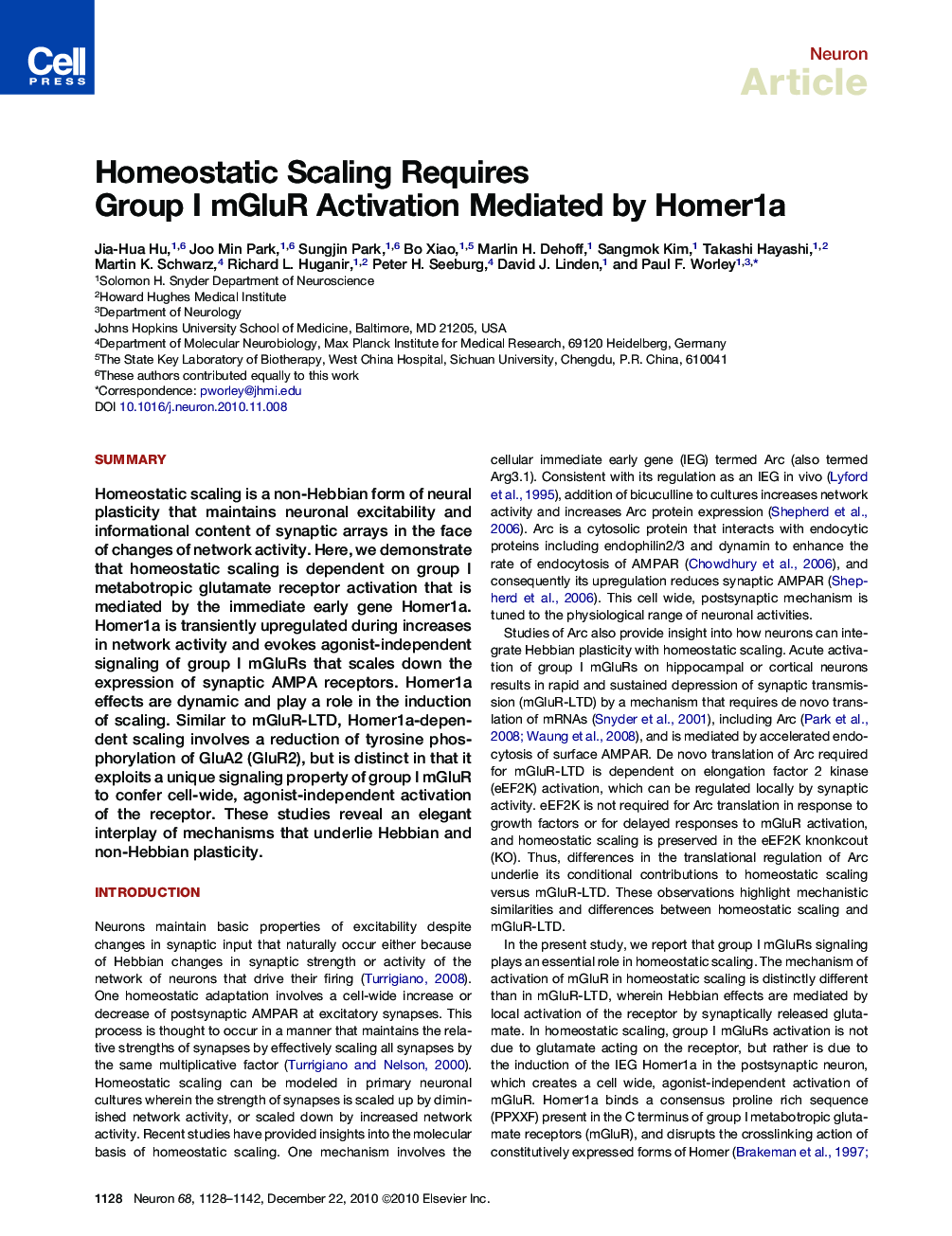| Article ID | Journal | Published Year | Pages | File Type |
|---|---|---|---|---|
| 4321861 | Neuron | 2010 | 15 Pages |
SummaryHomeostatic scaling is a non-Hebbian form of neural plasticity that maintains neuronal excitability and informational content of synaptic arrays in the face of changes of network activity. Here, we demonstrate that homeostatic scaling is dependent on group I metabotropic glutamate receptor activation that is mediated by the immediate early gene Homer1a. Homer1a is transiently upregulated during increases in network activity and evokes agonist-independent signaling of group I mGluRs that scales down the expression of synaptic AMPA receptors. Homer1a effects are dynamic and play a role in the induction of scaling. Similar to mGluR-LTD, Homer1a-dependent scaling involves a reduction of tyrosine phosphorylation of GluA2 (GluR2), but is distinct in that it exploits a unique signaling property of group I mGluR to confer cell-wide, agonist-independent activation of the receptor. These studies reveal an elegant interplay of mechanisms that underlie Hebbian and non-Hebbian plasticity.
► Group I metabotropic receptors (mGluR) are required for homeostatic scaling (HS) ► mGluR signaling in HS is activated by the immediate early gene Homer1a ► mGluR-Homer1a scaling is linked to decreased tyrosine phosphorylation of GluA2 ► Homer1a and Arc evoke HS by distinct mechanisms
